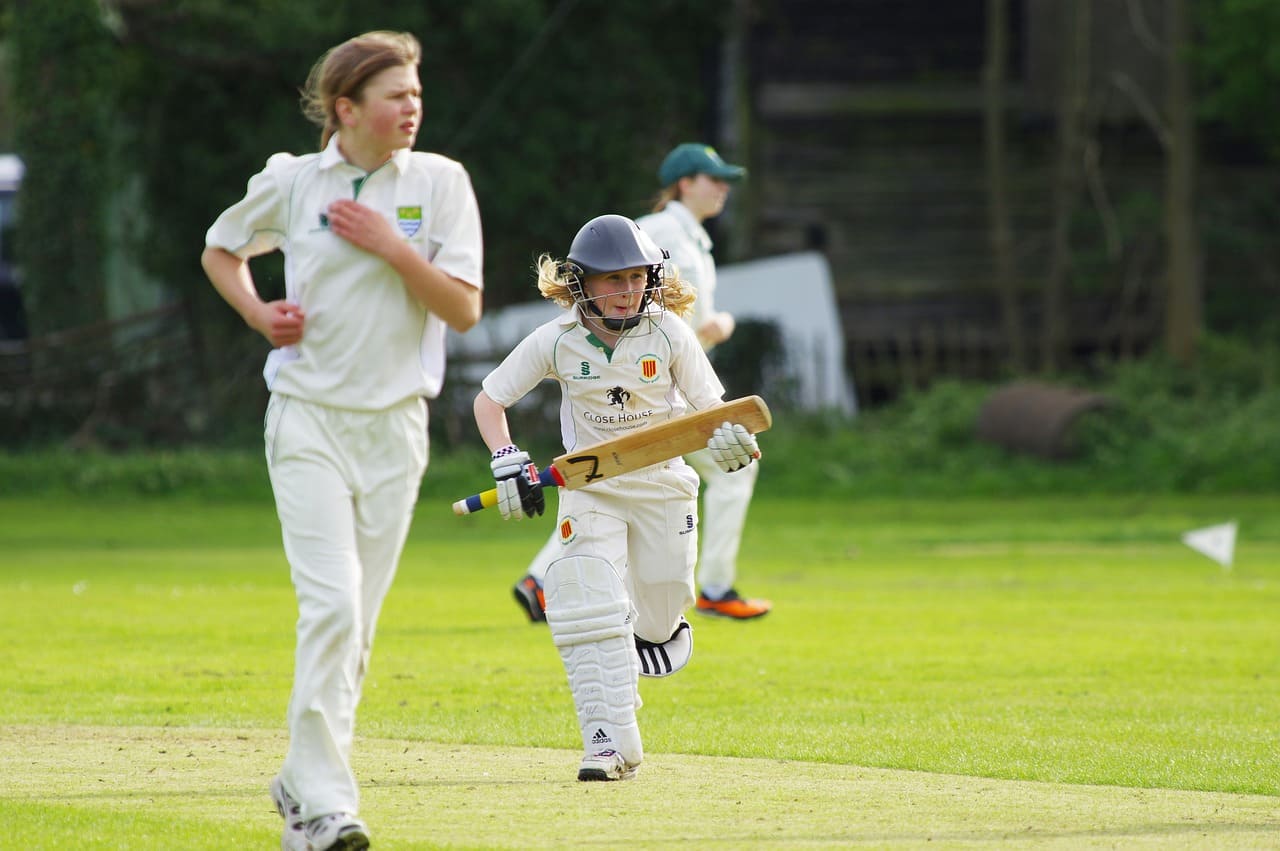Introduction to Junior Cricket
Welcome to the thrilling world of junior cricket, where young aspiring athletes take center stage and showcase their skills on the pitch! Whether you’re a passionate parent looking to introduce your child to the sport or a coach eager to nurture future cricket stars, this guide will equip you with all the essential knowledge and insights.
Junior cricket is an excellent way to improve skills and inculcate values such as collaboration, discipline, and sportsmanship among aspiring cricket players.
This article will explore everything you need to know about this exciting sport – from its benefits and rules to equipment requirements and training methods.
Benefits of Playing Junior Cricket
Playing junior cricket offers a multitude of benefits for young players. It allows them to develop their physical fitness and coordination skills. The game’s fast-paced nature requires players to run, catch, throw, and bat, which helps improve their overall athleticism.
Moreover, participating in junior cricket allows children to learn essential life skills such as teamwork and sportsmanship. They can interact with teammates and opponents from diverse backgrounds, fostering social integration and mutual respect.
Additionally, junior cricket instills discipline among young players. It teaches them the value of practice, dedication, perseverance, and adhering to rules – qualities that can be applied in sports and various aspects of life.
Furthermore, playing cricket at a young age promotes mental sharpness and strategic thinking. Players must make split-second decisions on the field while assessing different game situations – an invaluable skill that enhances cognitive abilities.
Lastly, yet importantly, junior cricket provides a platform for talent identification and player development. Youngsters who excel in this sport may receive opportunities for further training or participation at higher levels.
Rules and Regulations of the Game
Rules and regulations are integral to any sport, and junior cricket is no exception. Understanding the regulations ensures fair play and enhances the overall experience for young players.
The primary objective of cricket is to score more runs than the opposing team. Each team consists of 11 players, with one designated as captain. The game is played on a field with a pitch in the center, where most of the action occurs.
When batting, each player has to defend their wicket while trying to score runs by hitting the ball into open spaces on the field. On the other hand, when fielding, players aim to dismiss batters by getting them out through various means, such as catching or stumping.
Bowling plays a crucial role in cricket. Bowlers try to deliver balls that can deceive and get past batters’ defenses. They must follow specific rules regarding their run-up and delivery stride.
Umpires ensure that all players adhere to these rules during matches. They decide on appeals made by teams if they suspect a breach of regulations or foul play.
Junior cricket follows many laws similar to professional cricket but may have slight modifications depending on age groups or local leagues.
Equipment Needed for Junior Cricket
When playing junior cricket, having the right equipment is essential. Here are some of the critical items that young players will need to get started:
1. Cricket Bat: The bat is the most critical equipment for any cricketer. For juniors, choosing a bat that is the right size and weight for their age and height is essential. A lighter bat will allow them to swing with more control and accuracy.
2. Cricket Ball: A good quality cricket is crucial for practicing bowling, batting, and fielding skills. A softer tennis ball when starting is recommended, as this reduces the risk of injury.
3. Stumps and Bails: Setting up a proper pitch requires stumps and bails. This helps teach young players about wicket-keeping techniques and encourages accurate bowling.
4. Protective Gear: Safety should always come first in any sport, especially cricket, where balls can be bowled at high speeds! Juniors should wear protective gear such as helmets, pads, gloves, thigh guards, chest guards, and abdominal guards.
5. Clothing: Comfortable sports clothing is a must-have for junior cricketers.
Their attire should include a jersey or t-shirt with trousers or shorts made from breathable materials that allow ease of movement on the field.
Investing in good quality equipment enhances performance and ensures safety during playtime.
Training and Development for Young Players
Training and development are crucial in shaping young players into skilled cricketers; for aspiring junior cricketers, building a solid foundation through structured training programs focusing on technical skills and physical fitness is essential.
Coaches and trainers work closely with young players to help them understand the basics of batting, bowling, fielding, and wicket-keeping. They teach proper techniques such as grip, stance, footwork, and body alignment to ensure efficient performance on the field.
In addition to technical skills, emphasis is also given to developing physical fitness. Junior cricketers engage in various exercises and drills that improve their agility, speed, strength, endurance, and hand-eye coordination. This enhances their overall performance and reduces the risk of injuries.
Moreover, mental preparation is equally important for young players. They are taught strategies for decision-making under pressure and maintaining focus throughout the game. Developing good sportsmanship values like teamwork and respect for opponents and officials are also instilled in them.
Practicing at home or school with friends can significantly enhance skill levels to facilitate continuous development outside training sessions or matches. Additionally, watching professional games helps young players gain insights from experienced cricketers.
Commitment from both the player’s and parents’ support goes a long way in fostering growth opportunities for young cricket enthusiasts.
Local Leagues and Competitions for Junior Players
Participating in local leagues and competitions is integral to a young cricketer’s journey. These events provide valuable opportunities for junior players to showcase their skills, gain experience, and develop their game.
Local leagues offer a structured environment where kids can play matches against other teams in their area. This allows them to apply the techniques they learned during training sessions and test their abilities under match conditions. It also helps foster team spirit and camaraderie among the players as they work together towards a common goal.
Competing in these leagues hones their cricketing skills and teaches them essential life lessons such as discipline, perseverance, sportsmanship, and leadership. The thrill of competition drives young cricketers to push themselves harder, improve their performance, and strive for excellence.
Moreover, local leagues expose junior players to different playing styles and tactics opponents from various teams employ. This broadens their understanding of the game and helps them adapt to different situations on the field.
Additionally, local leagues often serve as talent pools where selectors identify promising young talents who may be invited to represent regional or national teams someday. Therefore, participation in these competitions can open doors for future opportunities at higher levels of cricket.
Local league matches adhere to established rules and regulations specific to each age group to ensure fair play and maintain competitiveness among participants. Umpires are present on the field to enforce these rules impartially while fostering respect towards officials’ decisions.
Tips for Parents and Coaches
1. Encourage a Love for the Game: As parents and coaches, fostering a love for cricket in young players is essential. Be enthusiastic about the game and show your support during practices and matches.
2. Focus on Skill Development: Help junior cricketers hone their skills by providing quality coaching and practice opportunities. Emphasize proper technique, footwork, batting stance, bowling action, fielding drills, and more.
3. Balance Fun and Competition: While teaching kids about competition is essential, remember that junior cricket should also be enjoyable. Create a supportive environment where players can have fun while learning new skills.
4. Teach Sportsmanship: Instill values of fair play, respect for opponents, teamwork, and good sportsmanship in young cricketers. Please encourage them to shake hands with opponents after matches, regardless of the outcome.
5. Set Realistic Goals: Help junior players set achievable goals that align with their skill level and age group category. This will keep them motivated throughout their cricket journey.
6. Provide Positive Reinforcement: Offer praise when deserved and provide constructive feedback to help improve performance without demoralizing young cricketers.
7. Ensure Safety Measures: Prioritize player safety by wearing appropriate protective gear such as helmets when batting or wicket-keeping, shin guards while fielding close-in positions, etc.
8. Support Their Mental Well-being: Recognize the importance of mental health in cricket by creating an open dialogue around handling pressure situations or dealing with failures gracefully.
The Future of Junior Cricket and its Impact on Professional Cricket
The future of junior cricket holds immense potential and is crucial for developing professional cricket. As young players hone their skills and gain experience at a junior level, they lay the foundation for a successful career in the sport.
One significant impact that junior cricket has on professional cricket is talent identification. The grassroots level provides an opportunity for scouts and selectors to spot promising young players who have the potential to represent their country or even become future stars. By nurturing these talents from a young age, coaches can help them refine their skills and ensure a smooth transition into higher levels of competition.
Furthermore, junior cricket also plays a vital role in developing essential life skills among young players. Children learn important values such as teamwork, discipline, perseverance, and leadership through team sports like cricket. These qualities are valuable on the field and contribute to personal growth off the field.
Moreover, by creating pathways for talented youngsters through structured leagues and competitions, junior cricket helps bridge the gap between amateurism and professionalism. It allows aspiring cricketers to gain exposure to high-quality coaching, competitive environments, and international play standards.
Additionally, advancements in technology have had a significant impact on both junior and professional cricket alike. With tools like video analysis systems and wearable devices becoming more accessible at all levels of play, including juniors, young cricketers now have access to advanced techniques previously limited only to professionals. This technological revolution enables better skill development while enhancing performance-tracking capabilities.
Conclusion
In this ultimate guide to junior cricket, we have explored the various aspects of the game and its significance for young players. We’ve covered everything from the benefits of playing junior cricket to the rules and regulations, equipment needed, training and development opportunities, local leagues and competitions, and tips for parents and coaches.
Junior cricket provides numerous physical, mental, and social benefits for children. It helps develop hand-eye coordination, teamwork, discipline, perseverance, and sportsmanship. By learning the game’s rules early on in their cricketing journey, young players can lay a strong foundation for their future in professional cricket if they so desire.
The equipment required for junior cricket includes:
· Bats.
· Balls (both hardball and softball options).
· Protective gear like helmets and pads.
Young cricketers must use appropriate equipment that matches their age group to ensure safety during practice sessions or matches.
Training plays a crucial role in honing the skills of aspiring cricketers. Depending on individual interests, junior players can benefit from coaching programs that improve batting techniques, bowling actions, or spin variations. Regular practice sessions help build muscle memory and improve overall performance.
Local leagues and competitions provide an excellent platform for junior players to showcase their talent while gaining valuable match experience. These events enhance players’ skills and foster healthy peer competition while promoting team camaraderie.
For parents who want to support their child’s passion for cricket or coaches looking to guide young talents towards success – patience is key! Please encourage your child without pressure; let them enjoy the game at their own pace while providing guidance when needed.
FAQS
1. At what age can children start playing junior cricket?
A: Children can start playing junior cricket as early as 5 or 6. Many clubs and organizations offer programs for younger children, known as “junior clinics,” where they can learn the game’s basic skills in a fun and supportive environment.
2. What are the benefits of playing junior cricket?
A: Playing junior cricket offers numerous benefits for young players. It helps develop physical fitness, hand-eye coordination, teamwork, and discipline. It also provides opportunities to make new friends, build confidence, and learn essential life lessons such as perseverance and sportsmanship.
3. What equipment do young cricketers need?
A: Young cricketers will need appropriate protective gear such as a helmet, pads, gloves, and an abdominal guard. They will also require a cricket bat suitable for their size and weight. Additionally, they should have comfortable clothing (including whites), appropriate footwear with spikes if necessary, and a water bottle to stay hydrated during matches or training sessions.
4. How can parents support their child’s involvement in junior cricket?
A: Parents play a vital role in supporting their child’s interest in junior cricket. They can encourage regular practice at home or in local parks; ensure that their child has proper equipment; attend matches to cheer them on; provide emotional support after successes or setbacks; communicate positively with coaches about their child’s progress; and promote fair play and good sportsmanship values.
5. Are there any professional opportunities for young cricketers?
A: While it is not guaranteed that every young cricketer will go on to become a professional player precisely due to participation in juniors’ games alone pla,ying at this level allows talented individuals to showcase their abilities, which might open doors later on towards more advanced levels like club teams or representative squads where national selectors may be watching closely.










